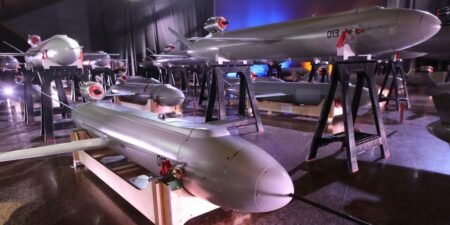Updated
This story is available exclusively to Business Insider
subscribers. Become an Insider
and start reading now.
Have an account? .
subscribers. Become an Insider
and start reading now.
Have an account? .
- I toured the secret rooms where pilots and flight attendants rest on long-haul Air New Zealand flights.
- The Boeing 777-300ER had a room with two beds for pilots and an eight-bed area for flight attendants.
- Both rest areas were tight, but I noticed that pilots had more amenities than flight attendants.
For years, I boarded long-haul flights without thinking twice about where pilots and flight attendants rest.
That’s not the case for aircraft designers, who build secret areas on planes where these airline workers can take their mandated breaks.
I finally had the chance to see these hidden rooms when I boarded a long-haul flight on Air New Zealand’s Boeing 777-300ER in 2021.
I explored two rooms — one where pilots rest and another for flight attendants — and noticed that the pilots had more amenities than the flight attendants. Take a look.
Before takeoff on an Air New Zealand flight from New Zealand to Los Angeles, I toured the hidden rest areas for pilots and flight attendants.
These crew areas are designed for one purpose: rest. Both flight attendants and pilots receive breaks during long-haul flights to refuel and recharge.
An Air New Zealand rep told Business Insider that the breaks, which are legally mandated and typically about two hours long, happen in shifts. That means there are always pilots in the cockpit and flight attendants in the cabin.
As I explored the two rooms, which are typically off-limits to passengers, I spotted some drastic differences — from size to amenities.
The first clear difference I spotted was the location of each area. Both rest areas are above passengers’ seats but on opposite sides of the plane.
The doors to each area were identical and designed to blend into the galleys. This helps protect from unwanted visitors, an Air New Zealand flight attendant explained.
Both rooms also required a passcode.
Once the doors were unlocked, the entrances were also similar. A set of steep, small steps led up to each room.
Both sets of stairs were coated in a non-slip tread.
But this was where many of the similarities stopped. Once I entered the rooms, I noticed the pilots had more space than the flight attendants.
The rest area for pilots is designed for two people.
Eight flight attendants can fit in their designated rest area on the Boeing 777-300ERs.
The pilots also had multiple resting options. At the front of the room were two large leather recliners, and behind them were two beds.
The flight attendants only had bunk-style beds in their room.
The pilots also had an entertainment option. A TV similar to the ones travelers had in business class was stationed near each recliner.
I didn’t see any TVs in the space for flight attendants. Instead, the entrance to their room had a mirror and some storage.
Both flight attendants and pilots had privacy curtains and bedding for their beds.
Everyone was also able to control the light in their rest area …
… as well as the temperature.
In the bedroom areas, I noticed that pilots had more amenities. For instance, there were multiple cupholders and overhead storage near their beds.
The flight attendants had two smaller storage compartments and a mirror.
Phones were stationed in both rooms so pilots and flight attendants could communicate with each other and their colleagues.
Each room also had a closet for uniforms. This way, the flight attendants’ and pilots’ clothing wouldn’t get wrinkly while they slept.
Overall, it seemed to me that the pilots had more amenities. If I had to pick a place to rest, I’d much rather be a pilot with their comfy lounge chairs and TVs.
Ultimately, I was happier with the fewer responsibilities and the luxe amenities I had in my business-class seat below.
Read the full article here

















